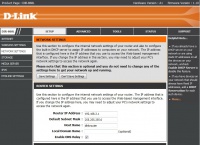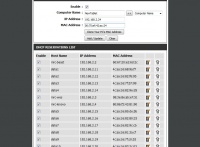Barcode Epidemic
Work in Progress!
Playing the Game
Getting Started
Usually, everything will have already been set up. So to get everything working, the sequence of events will normally be along these lines:-
- Plug in the router and switch it on.
- Plug in the laptop (server) and switch it on.
- Plug in projector/tv screen, and connect laptop to it.
- Test that in advance of any public event.
- Not all TVs are friendly. Check the notes about the laptop you're planning to use - whether it has a DisplayPort (HP), HDMI port (Lenovo and others), or a VGA port (almost everything). Check carefully you have the right cable as they are similar! And verify that what you're plugging the cable into supports it and works...
- Check that laptop is joined to mrc_outbreaks network.
- Double click on Live Epidemic on the laptop
- Turn some tablets on. Check they join mrc_outbreaks network.
- Start scanning barcodes.
How The Game Works
- The game works in social events of maybe 30+ people, in a well bounded arena, with a big screen.
- Start it by giving one or two people in the crowd a barcode. (Seed infections).
- Tell them to go to "infection control" - the people with the tablets.
- The victim sees the infection controller and presents the barcode.
- We have run two variations of this game; one of the following will apply:-
- The infection controller asks whether the victim is a member of the department, or a visitor. Later on, we look at the graphs to see whether infections spread differently within the two groups, or between them.
- Alternatively, at the Centenary event, we allowed a vaccination probability, giving the victim immunity, and causing them to make no further contacts. The immunity would either be pre-defined (in which case the victim would know already), or their status could be determined by pointing the tablet mysteriously at them and pushing a button.
- The infection controller scans their barcode, then destroys it.
- The tablet tells the infection controller how many infections they should make.
- The infection controller scans a barcode for each of those new infections, and gives it to the victim.
- The victim is told to spread these infections to whoever they want. Tell each new victim to visit "infection control".
- The victim is told they are now immune to further infections. However, it's most fun to keep this fact secret.
- If the victim is given any more barcodes, they must accept them, but they shouldn't visit infection control again.
- Graphs and movies of the current epidemic will be shown in bright colours somewhere in the room.
The Parameters
- The tablets communicate with a web server; the dynamics of the epidemic can therefore be changed on-the-fly, without the infection controllers knowing about it.
- If appropriate for the game being played, the vaccination probability can be set.
- The number of contacts is assumed to be poisson distributed around a specified mean.
- However, in practise, we want to truncate the tail quite tightly, so there is a ceiling parameter.
- And in some cases, we wanted to ensure people made at least one contact, so there is a floor parameter too.
- These can be set by browsing to the web server (pehaps http://192.168.2.2/epi - see below) when connected to the mrc_outbreaks network.
Installation from Scratch
If something has gone wrong, or the Barcode Epidemic needs setting up on new equipment, then the following should be everything you need to know. I'll use the current equipment to describe the process; steps will differ with different equipment obviously, but the principles should still work!
The Web Server
We need to run a lightweight HTTP server that supports PHP, and we'll use it to run a tiny website that supports the communication and data collection. The same platform supports the Herd Immunity app, so I'll put the setup for the web server stuff on a separate page: Web Platform for MRC Outreach Events.
Router and Wireless Connectivity
The Belkin has gone, the D-Link has come. The router is a D-Link DIR-868L, which works fine. Mostly, you'll just have to plug it in, and push the button on the back, and wait for the mrc_outbreaks wifi network to appear. The D-Link is already configured, so I won't describe that here; but all you need if you set this up on another router, is a wifi network, and to ensure that your web server always gets the same IP. I configured the D-Link so that tablets would get the set IP addresses too, although that shouldn't really matter.
To add a server or tablet to the router's DHCP
- Connect to the mrc_outbreaks wifi, or attach to the router with a network cable.
- Browse to 192.168.2.1, and login with admin, and the secret password which you get by contacting Wes, or IT.
- Click on NETWORK SETTINGS on the left, and scroll down to ADD DHCP RESERVATION.
- Feed it a name, the IP address, and the MAC Address of the new machine. Don't know the MAC address?
- On Windows, open a Command Prompt, and ipconfig /all |more. It will list all your network connections - look for Physical Address for the right one.
- On Mac, open a Terminal Window, and ifconfig - look for the right network connection, and the MAC address starts with ether.
- You may have more than one network card - for example, wireless and wired. But you should be able to guess which one from the text that ipconfig or ifconfig gives you.
- On Android, Something like Apps, Settings, and under System, About Device, and Status. Look for Wi-Fi MAC address.
- Tick the enable box, and click the Add/Update button.
- In the instructions here, I'm going to assume the web server's IP address is 192.168.2.2 - this obviously might be different on your setup, or if we add more web server machines to the router's DHCP table.
The tablet
- Test by taking a tablet.
- Join the mrc_outbreaks.
- Browse to 192.168.2.2 to test it.
- You need two extra apps. Pic2shop does the barcode scanning for us, and there's the Live Epidemic app itself.
- To install these apps, I'm going to assume you've installed the Android tools, and the hack for the HP tablets described here.
- Connect a single tablet at a time to the laptop. In a command window, change directory to where you put your Android Development Tools (eg, cd \Program Files\Android).
- Then cd sdk/platform-tools. Might be a good idea to copy any apk files you want to install into that folder.
- adb install app.apk (where app.apk is the path to the package you want to install - pic2shop.apk or liveepi.apk)
- The apps will install.
- You might need to tell the Live Epi app where the web server is. Click the "three dots" icon in the top left corner, and set the website to http://192.168.2.2/epi/
- Then scan a barcode. If it appears to work, then it probably does!
The Live Display App
- Finally, we need to install the graph plotter software for the big screen. Firstly, unzip the content into a folder called "C:\Cent". (The name is a legacy from the MRC Centenary events by the way).
- Pre-requesties:-
- You'll need a version of R installed. Add the statnet and animation packages in the normal way.
- Unzip the ndtv package into the library folder, inside your R installation.
- Install Java (JDK recommended) - any version 7 or later. Add the path to java.exe (C:\Program Files\Java\jdk1.8.0_05\bin) to the system path.
- Install PDFtk Server - a commandline set of tools for mangling PDFs. As part of the install, say yes, it should add the bin folder to the system path. #
- Install the dot matrix font, as the interface uses it to look, er, cool.
- Install GhostScript.
- Unzip the 64-bit VLC into C:\Program Files\VLC
- Remember to start a new command window after changing the system path!
- The Content
- Make a folder C:\Cent to put the content in - the name is a echo of the MRC Centenary events where all this began.
- Edit run_r.bat and mm.bat and check that the path to your R installation is correct.

